Enumerate the Components of Waldeyer’s Tonsillar Ring.
It is a ring of lymphoid tissue at the oropharyngeal isthmus, formed by:
- Pharyngeal tonsil
- Tubal tonsils
- Palatine tonsils
- Lingual tonsil
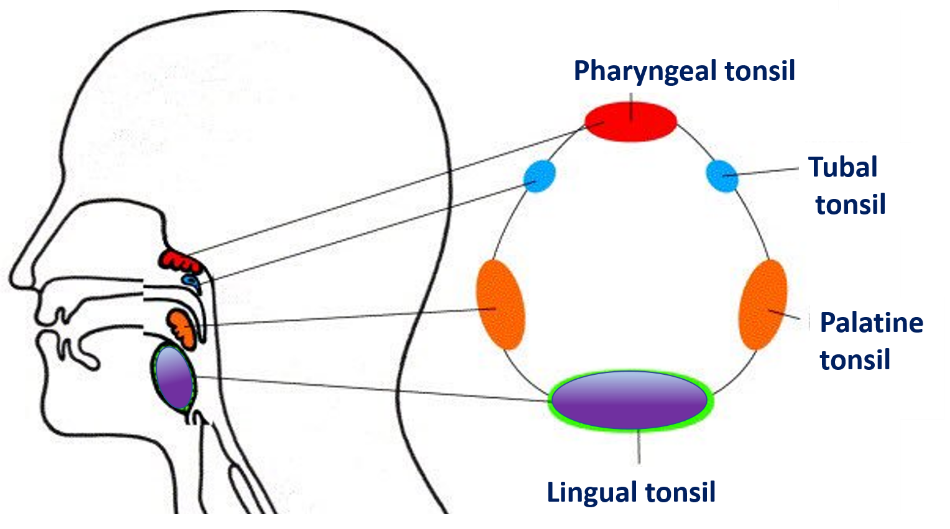
Where is Palatine Tonsil Located?
Location: Palatine tonsils are a collection of lymphoid tissue present in the submucosa of oropharynx. They are located in the tonsillar fossa, one on each side, in the lateral wall of the oropharynx. Boundaries of tonsillar fossa/sinus are:
- Anterior: Palatoglossal arch
- Posterior: Palatopharyngeal arch
- Superior: Where the palatoglossal and palatopharyngeal arches meet.
- Inferior: Dorsal surface of posterior 1/3rd of the tongue.
- Lateral : lateral wall of oropharynx.
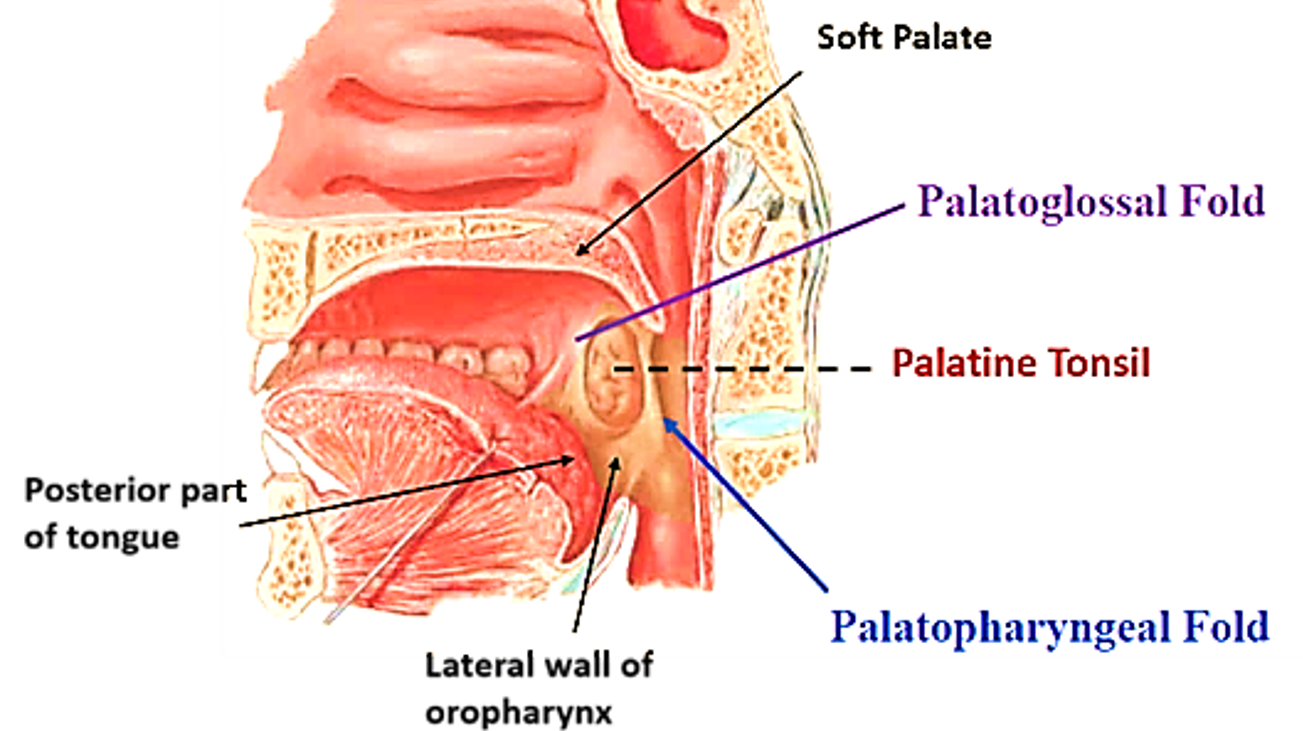
Describe the Gross Features of Palatine Tonsil.
Palatine tonsil is almond-shaped. It has:
- Two pole: upper and lower
- Two borders: anterior and posterior
- Two surfaces: medial and lateral
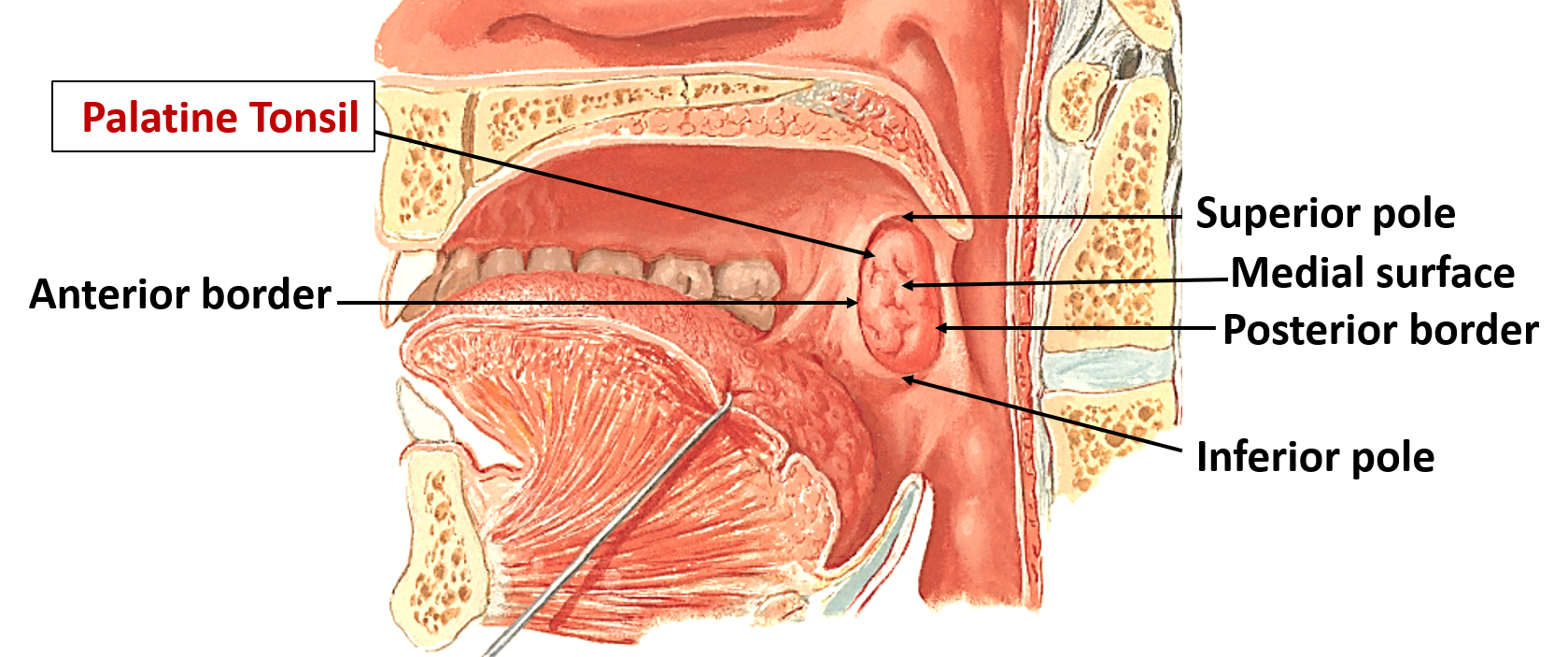
Describe the Relations of Palatine Tonsil?
Following are the relations of palatine tonsil.
- Upper pole is related to soft palate.
- Lower pole extends up to the dorsum of posterior 1/3rd of tongue.
- Anterior border is related to palatoglossal arch.
- Posterior border to palatopharyngeal arch.
- Medial surface:Is free and faces the oropharynx.Is covered by stratified squamous non-keratinized epithelium.Is pitted due to the presence of 15-20 crypts. The largest of them called intratonsillar cleft/crypta magna(remnant of 2nd pharyngeal pouch).
- Lateral surface (structure related to this surface form tonsillar bed): From medial to lateral they are:
- Fibrous capsule formed by condensation of pharyngo-basilar fascia.
- Loose areolar tissue (peritonsillar space) containing para-tonsillar vein.
- Superior constrictor muscle of pharynx.
- Arteries: loop of facial artery and its ascending palatine branch, ascending pharyngeal artery.
- Muscles: styloglossus and stylopharyngeus
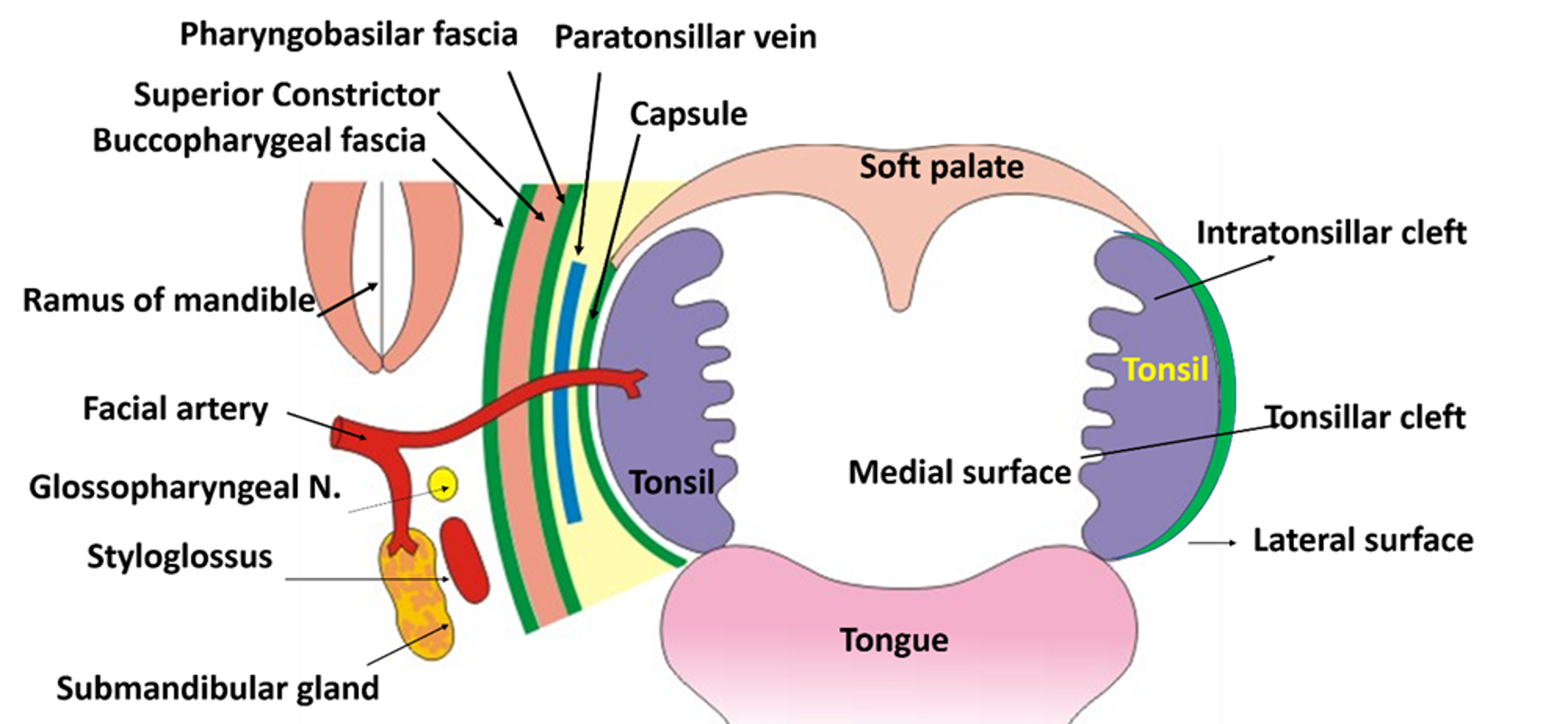
Describe the Blood Supply and Lymphatic Drainage of Palatine Tonsil.
Arterial supply of palatine tonsil
The palatine tonsil is supplied by 5 arteries.
- Tonsillar branch of facial artery(chief artery)
- Dorsal lingual branch of lingual artery.
- Ascending palatine branch of facial artery
- Descending palatine branch of ascending pharyngeal artery ( branch of external carotid artery)
- Branch from greater palatine artery (branch of maxillary artery).
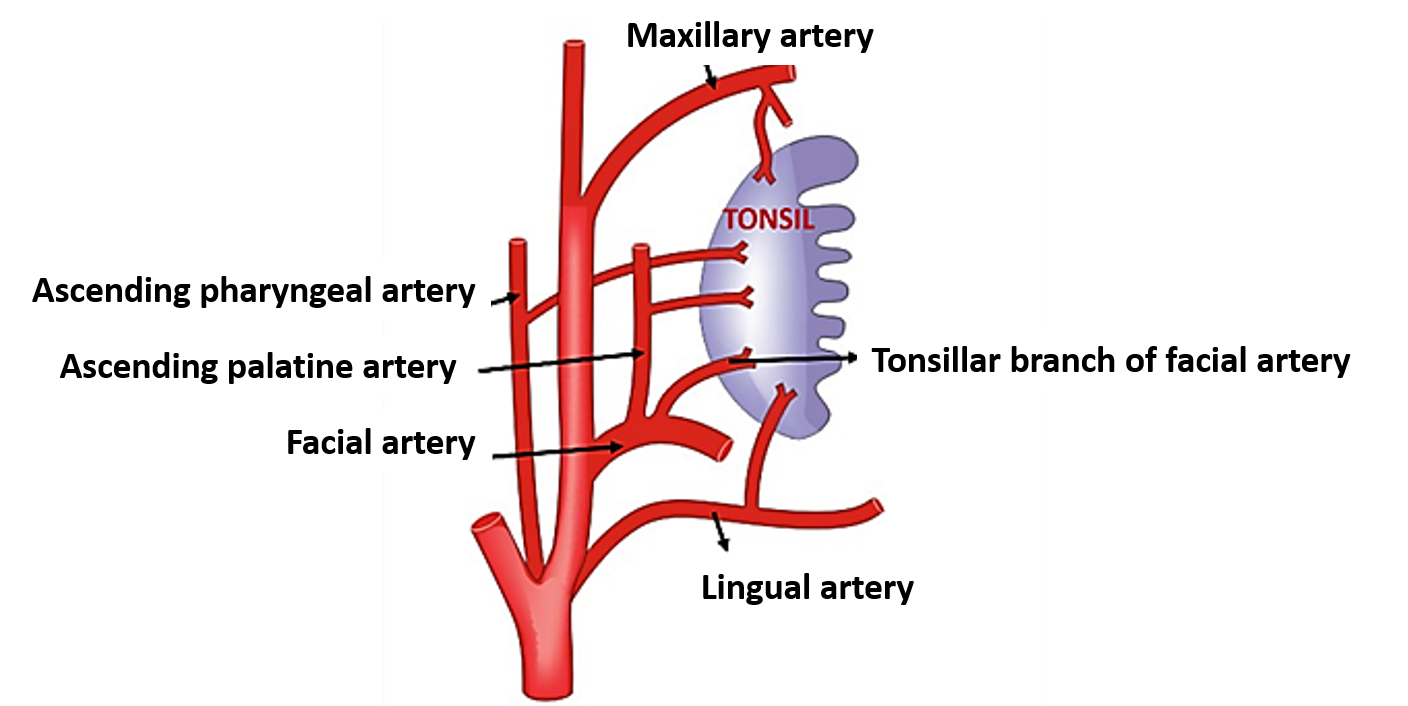
Venous drainage of palatine tonsil
The veins of the tonsil drain into:
- Paratonsillar vein which descends from soft palate across the lateral aspect of tonsillar capsule and pieces superior constrictor of pharynx to drain into pharyngeal venous plexus.
- Tonsillar veins which accompany tonsillar branch of facial artery and drain into common facial vein.
Lymphatic drainage of palatine tonsil
Lymphatics from tonsil drains mainly into juglo-digastric lymph nodes (called tonsillar nodes as they are enlarged in tonsillitis)
Applied Aspects
Adenoids
Adenoid is hypertrophy/enlargement of pharyngeal tonsil that may block nasopharynx and cause difficulty in nasal breathing and phonation. It may block the pharyngeal orifice of the auditory tube causing hearing impairment. Typical facial appearance is termed adenoid facies characterized by:
- Pinched nose due to airway obstruction(nasopharynx)
- Open mouth due to mouth breathing.
Quinsy/Peritonsillar abcess
It is accumulation of pus in peritonsillar space in chronic tonsillitis. The tonsillar bed is separated from the capsule by loose areolar tissue which is the site of collection of pus in peritonsillar abscess (Quinsy).
Palatine tonsillectomy
It is surgical removal of palatine tonsil. During tonsillectomy:
- Severe haemorrhage may occur
- From the paratonsillar veins.
- From tonsillar branch of facial artery.
- Glossopharyngeal nerve may be injured causing loss of general and taste sensation from the posterior 1/3rd of the tongue.

I am writing an article on tonsils, may I have permission to use the Waldeyers ring image.
Thank you